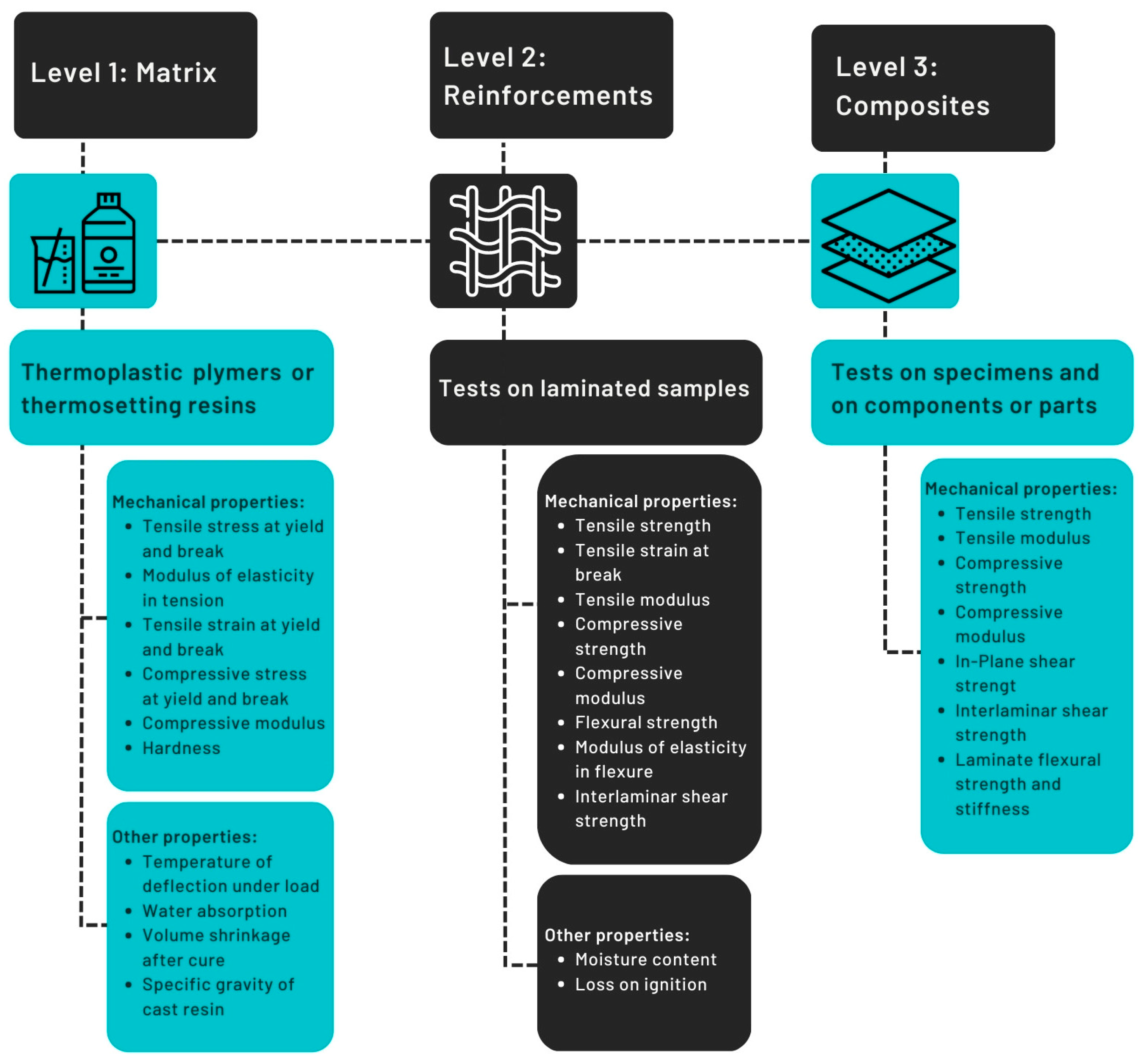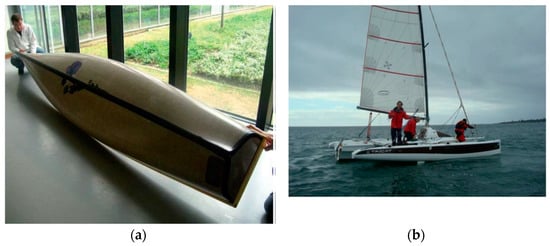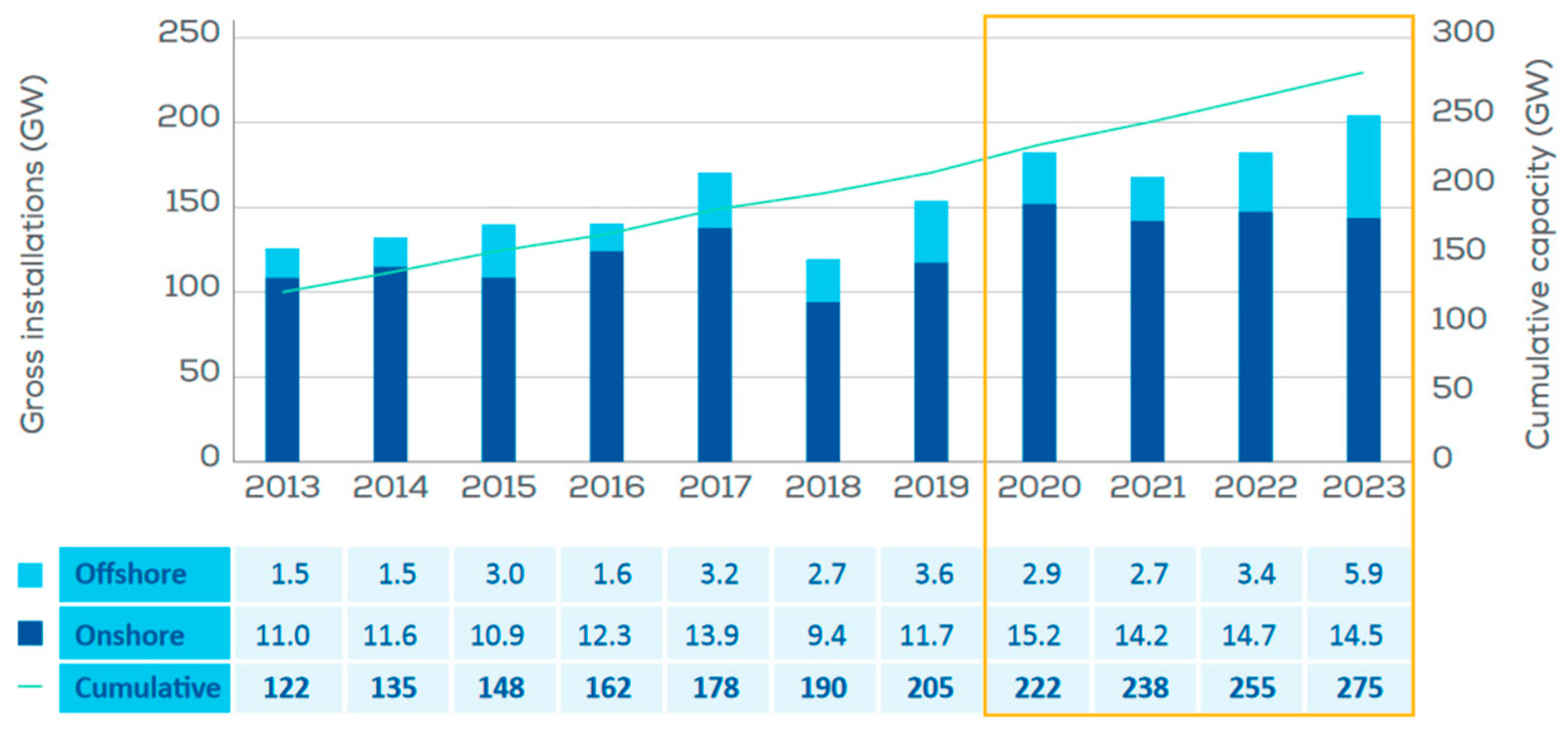Your browser does not fully support modern features. Please upgrade for a smoother experience.
Please note this is an old version of this entry, which may differ significantly from the current revision.
Green composites have gained increasing attention as a sustainable alternative to traditional materials used in marine structures. These composites are made from biodegradable and renewable materials, making them environmentally friendly and reducing the subsequent carbon footprint.
- marine structures
- lightweight structures
- sustainable mobility
- green ship
- green composites
- wood
- natural fibre-reinforced composites
- advanced composite materials
1. Introduction
Polymers are widely applied in all industrial fields: it is estimated that since 1950, about 8.3 billion tonnes of plastic have been manufactured, and the current global production of fossil fuel-based polymers account for about 350 million tonnes per year [1]. Despite many benefits, polymeric materials are well known for being the cause of serious environmental consequences. The marine environment is particularly affected by plastic and microplastic (MP, <5 mm) debris aggregation, which jeopardises marine organisms and human lives. As reported by Everaert et al. [2], about 0.17% of the ocean surface is at risk due to microplastics, and this fraction could increase up to 0.52% in 2050, and 1.62% in 2100. The Mediterranean Sea and the Yellow Sea are hotspots of marine microplastic risks [2].
When polymers are destined for marine applications, their choice should carefully consider the compatibility with the marine environment, which produces severe conditions due to several factors (wave loading, underwater pressure, fouling, high salinity, fluctuant temperature, ultraviolet radiation, and moisture uptake).
The most valuable structural application for polymers in the marine industry is represented by composite materials, constituted of polymeric matrices containing different types and amounts of fillers. The growing interest towards composite materials is the result of the necessity to lighten the structures, hence, reducing fuel consumption and therefore the emissions responsible for environmental pollution [3]. Over time, this objective has led to an extraordinary increase in the production and dissemination of composite materials in all industrial sectors and, consequently, in the resulting environmental impact [4][5][6][7].
Among composite materials, fibre reinforced polymers (FRP) play a dominant role, and typically include synthetic fibres (e.g., glass, carbon, aramid). The synthetic FRPs are not biodegradable and can stay in the environment for hundreds of years. Moreover, polymer production from fossil fuels releases a significant amount of excess greenhouse gases (GHG), contributing to global warming. Such conventional and synthetic composites are commonly used in marine industry as a result of their interesting properties, such as corrosion resistance and a high strength to density ratio, even if some weaknesses, such as the vulnerability to impact damage [8], should also be considered. Currently, FRPs are the most used materials for small-size vessels (90% of the circulating boats). Glass-reinforced plastic (GRP) is the predominant category of composite, representing approximately 80% of the hulls for vessels up to 20 m in length [9]. FRPs are also used for navy ships [9][10][11] due to some crucial features for military applications, such as non-magnetic properties for minesweepers [9], and stealth properties, which made them ideal as Radar Absorbing Structures (RAS) [12]. Composites have also gained a role of primary importance in the offshore industry [13].
Despite countless benefits, composites’ end-of-life (EoL) management is still an open question. FRPs are hardly recyclable, and the disposal of FRP vessels is dangerous and expensive: the pyrolysis of a 15 m boat requires high temperatures (about 700 °C) and therefore, high energy demand and high associated costs (about EUR 16,000), without mentioning the associated health risks [13][14][15][16][17]. Other alternatives, meant to reduce the environmental impact of the decommissioned FRPs, include the reuse in other composite products, but their value and the mechanical characteristics are significantly low [18][19][20][21]. In addition, FRP materials use a significantly high amount of energy for their production. All of these aspects must be considered while approaching the life cycle assessment (LCA) of a vessel, which starts from raw material production to end-of-life (EoL) strategies. The identification of EoL alternatives (reuse, recycling, and disposal) is fundamental to improve the life cycle consequences of vessels [22][23].
2. Marine Applications of Green Composites
2.1. Current Rules and Standards
Classification societies, such as the American Bureau of Shipping (ABS), Lloyd’s Register (LR), and DNV GL, have established guidelines and rules for the use of composite materials and structures in marine structures. Class rules address the design, fabrication, inspection, and testing of composites, including requirements for materials selection, manufacturing processes, quality control, and inspection methods. The specifics of the rules can vary between classification societies and are subject to changes and updates, aimed at ensuring high standards of safety and reliability. A common principle of the current rules is that when the use of unusual materials is proposed, special tests or examinations before and during service may be required. Hence, the application of green composites in marine structures should at least guarantee the minimum requirements established for traditional composites, but could be also subjected to additional checks. Despite some particularities and differences among class rules, the general approach recommended to achieve composite certification includes the following steps:
-
Tests on the matrix;
-
Tests on the reinforcements;
-
Tests on composites samples and/or specific tests on components or parts.
Test procedures are usually defined in accordance with international standards (e.g., ISO standards).
A summary of the steps for composite certification, including the most crucial properties to be assessed according to some of the classification societies [24][25][26][27], is reported in Figure 1.

Figure 1. Summary of the properties to be assessed for composites to be used in marine structures, according to classification societies.
In addition to the requirements on constituent materials, classification societies usually provide rules or guidelines on the design and calculation of composite construction [24][25][26][27].
2.2. Green Composites for Boat Building
There is a growing interest in replacing fossil fuel-based polymers and composites with more sustainable and renewable fully bio-based composite materials in marine applications, aiming at reducing the carbon footprint and the environmental impact. The typical service life for ships and offshore structures is 20 years, during which, structures are subjected to different harsh conditions, hence, the assessment of the long-term durability according to marine applications is necessary, in order to evaluate the related degradation mechanisms. The relevant literature on the long-term durability of biocomposites specific for marine environments is reviewed in [28]. Among the prototypes reported to have good potentials in terms of durability when exposed to the marine environment, there is a flax/PLA canoe and a flax fibre-reinforced trimaran, displayed in Figure 2.

Figure 2. (a) Flax/PLA canoe manufactured during the NAVECOMAT project; (b) Gwalaz, flax fibre-reinforced trimaran [28].
The compatibility of flax fibres with the marine environment attracted the attention of Živković et al. [29], who evaluated the influence of moisture absorption on the impact properties of flax fibre composites, along with basalt and hybrid flax–basalt fibre composites. The low environmental impact of the tested composites was guaranteed, not only by natural fibres, but also by the use of a low styrene emission vinyl ester matrix. According to the impact testing on both dry and conditioned samples, flax fibre specimens experienced an increased impact resistance after accelerated aging in salt water, whereas basalt fibre composites had worse impact properties after conditioning. Hybrid flax–basalt fibre specimens, on the other hand, had similar impact strength in dry and aged conditions, a more uniform response, and a more stable behaviour in term of moisture absorption.
The necessity to thoroughly investigate the properties of bio-based composites, in order to guarantee high reliability standards for shipbuilding, has so far limited the use of similar materials in small boats. In addition, bio-based composites with potential shipbuilding applications are countless, hence, specific assessment of their properties and the best manufacturing technology for each type is required.
An example of natural fibre-based composite testing and subsequent manufacturing of a small boat was offered by Misri et al. [30]. The referenced analysis suggested a woven glass–sugar palm fibre-reinforced unsaturated polyester hybrid composite to manufacture a small boat with the compression moulding technique. The conclusions highlighted that the mechanical properties of the hybrid composite were higher than composite based only on the natural woven sugar palm fibres. However, it should be observed that the environmental sustainability of such a solution was not optimal.
2.3. Green Composites for Offshore
In recent years, composite materials have expanded to applications where the corrosion resistance is an appreciated property: the offshore, marine, and wind energy industries [13][31][32][33]. Composites are employed in wind turbine blades thanks to their high specific strength [13]. The gross annual wind turbine installations in Europe are shown in Figure 3 [13], where the yellow box refer to the last four years (2020–2023).

Figure 3. Gross annual wind turbine installations in Europe [13].
The Global Wind Energy Council (GWEC) reported that there are more than a third of a million utility-scale wind turbines installed around the world, most of which are designed for a service life of 20–25 years. Turbines from the first major wave of wind power in the 1990s are currently reaching their expected end of life [13]. According to [34][35], the usage of blade material waste is expected to grow from 1,000,000 t in 2020 up to 2,000,000 t in 2030, doubling within the current 2020 decade. It is predicted that a quarter of this EoL waste will be in Europe.
In this frame, recycling will become an even more pressing matter in the 2020s.
According to Wind Europe, there will be around 14,000 blades (about 40,000–60,000 t) planned for decommissioning by 2023, and their recycling is a top priority for the wind industry [13].
This entry is adapted from the peer-reviewed paper 10.3390/jmse11030599
References
- Walker, S.; Rothman, R. Life Cycle Assessment of Bio-Based and Fossil-Based Plastic: A Review. J. Clean. Prod. 2020, 261, 121158.
- Everaert, G.; de Rijcke, M.; Lonneville, B.; Janssen, C.R.; Backhaus, T.; Mees, J.; van Sebille, E.; Koelmans, A.A.; Catarino, A.I.; Vandegehuchte, M.B. Risks of Floating Microplastic in the Global Ocean. Environ. Pollut. 2020, 267, 115499.
- Timmis, A.J.; Hodzic, A.; Koh, L.; Bonner, M.; Soutis, C.; Schäfer, A.W.; Dray, L. Environmental Impact Assessment of Aviation Emission Reduction through the Implementation of Composite Materials. Int. J. Life Cycle Assess. 2015, 20, 233–243.
- Duflou, J.R.; de Moor, J.; Verpoest, I.; Dewulf, W. Environmental Impact Analysis of Composite Use in Car Manufacturing. CIRP Ann. Manuf. Technol. 2009, 58, 9–12.
- Vo Dong, P.A.; Azzaro-Pantel, C.; Cadene, A.L. Economic and Environmental Assessment of Recovery and Disposal Pathways for CFRP Waste Management. Resour. Conserv. Recycl. 2018, 133, 63–75.
- Calado, E.A.; Leite, M.; Silva, A. Selecting Composite Materials Considering Cost and Environmental Impact in the Early Phases of Aircraft Structure Design. J. Clean. Prod. 2018, 186, 113–122.
- Umair, S. Environmental Impacts of Fiber Composite Materials-Study on Life Cycle Assessment of Materials Used for Ship Superstructure; Royal Institute of Technology: Stockholm, Sweden, 2006.
- Sutherland, L.S. A Review of Impact Testing on Marine Composite Materials: Part I—Marine Impacts on Marine Composites. Compos. Struct. 2018, 188, 197–208.
- Rubino, F.; Nisticò, A.; Tucci, F.; Carlone, P. Marine Application of Fiber Reinforced Composites: A Review. J. Mar. Sci. Eng. 2020, 8, 26.
- Saravanan, M.; Kumar, D.B. A Review on Navy Ship Parts by Advanced Composite Material. Mater. Today Proc. 2021, 45, 6072–6077.
- Mouritz, A.P.; Gellert, E.; Burchill, P.; Challis, K. Review of Advanced Composite Structures for Naval Ships and Submarines. Compos. Struct. 2001, 53, 21–24.
- Jayalakshmi, C.G.; Inamdar, A.; Anand, A.; Kandasubramanian, B. Polymer Matrix Composites as Broadband Radar Absorbing Structures for Stealth Aircrafts. J. Appl. Polym. Sci. 2018, 136, 47241.
- Krauklis, A.E.; Karl, C.W.; Gagani, A.I.; Jørgensen, J.K. Composite Material Recycling Technology—State-of-the-Art and Sustainable Development for the 2020s. J. Compos. Sci. 2021, 5, 28.
- Nasso, C.; la Monaca, U.; Bertagna, S.; Braidotti, L.; Mauro, F.; Trincas, G.; Marinó, A.; Bucci, V. Integrated Design of an Eco-Friendly Wooden Passenger Craft for Inland Navigation. Int. Shipbuild. Prog. 2019, 66, 35–55.
- la Rosa, A.D.; Banatao, D.R.; Pastine, S.J.; Latteri, A.; Cicala, G. Recycling Treatment of Carbon Fibre/Epoxy Composites: Materials Recovery and Characterization and Environmental Impacts through Life Cycle Assessment. Compos. B Eng. 2016, 104, 17–25.
- Witik, R.A.; Teuscher, R.; Michaud, V.; Ludwig, C.; Månson, J.A.E. Carbon Fibre Reinforced Composite Waste: An Environmental Assessment of Recycling, Energy Recovery and Landfilling. Compos. Part. A Appl. Sci. Manuf. 2013, 49, 89–99.
- Gonçalves, R.M.; Martinho, A.; Oliveira, J.P. Evaluating the Potential Use of Recycled Glass Fibers for the Development of Gypsum-Based Composites. Constr. Build. Mater. 2022, 321, 126320.
- Khalid, M.Y.; Arif, Z.U.; al Rashid, A. Investigation of Tensile and Flexural Behavior of Green Composites along with Their Impact Response at Different Energies. Int. J. Precis. Eng. Manuf.-Green. Technol. 2022, 9, 1399–1410.
- Bank, L.C.; Arias, F.R.; Yazdanbakhsh, A.; Gentry, T.R.; Al-Haddad, T.; Chen, J.F.; Morrow, R. Concepts for Reusing Composite Materials from Decommissioned Wind Turbine Blades in Affordable Housing. Recycling 2018, 3, 3.
- Joustra, J.; Flipsen, B.; Balkenende, R. Structural Reuse of Wind Turbine Blades through Segmentation. Compos. Part. C Open Access 2021, 5, 100137.
- Ribeiro, M.C.S.; Meira-Castro, A.C.; Silva, F.G.; Santos, J.; Meixedo, J.P.; Fiúza, A.; Dinis, M.L.; Alvim, M.R. Re-Use Assessment of Thermoset Composite Wastes as Aggregate and Filler Replacement for Concrete-Polymer Composite Materials: A Case Study Regarding GFRP Pultrusion Wastes. Resour. Conserv. Recycl. 2015, 104, 417–426.
- Önal, M.; Neşer, G. End-of-Life Alternatives of Glass Reinforced Polyester Boat Hulls Compared by LCA. Adv. Compos. Lett. 2018, 27, 096369351802700.
- Cucinotta, F.; Raffaele, M.; Salmeri, F. A Well-to-Wheel Comparative Life Cycle Assessment Between Full Electric and Traditional Petrol Engines in the European Context; Springer International Publishing: Cham, Switzerland, 2021; ISBN 9783030705664.
- Lloyd’s Register. Rules and Regulations for the Classification of Special Service Craft. 2022. Available online: https://www.lr.org/en/rules-and-regulations-for-the-classification-of-special-service-craft/ (accessed on 9 February 2023).
- Lloyd’s Register. Rules for the Manufacture, Testing and Certification of Materials. 2022. Available online: https://www.lr.org/en/rules-for-the-manufacture-testing-and-certification-of-materials/ (accessed on 9 February 2023).
- DNV GL. Rules for Classification -High Speed and Light Craft—Part 3 Structures, Equipment—Chapter 4 Hull Structural Design, Fibre Composite and Sandwich Constructions. 2016. Available online: https://rules.dnv.com/docs/pdf/DNV/RU-HSLC/2017-07/DNVGL-RU-HSLC-Pt3Ch4.pdf (accessed on 9 February 2023).
- DNV, G.L. Rules for Classification—Ships—Part 2 Materials and Welding—Chapter 3 Non-Metallic Materials. 2015. Available online: https://www.dnv.com/rules-standards/index.html (accessed on 9 February 2023).
- Curto, M.; le Gall, M.; Catarino, A.I.; Niu, Z.; Davies, P.; Everaert, G.; Dhakal, H.N. Long-Term Durability and Ecotoxicity of Biocomposites in Marine Environments: A Review. RSC Adv. 2021, 11, 32917–32941.
- Živković, I.; Fragassa, C.; Pavlović, A.; Brugo, T. Influence of Moisture Absorption on the Impact Properties of Flax, Basalt and Hybrid Flax/Basalt Fiber Reinforced Green Composites. Compos. B Eng. 2017, 111, 148–164.
- Misri, S.; Leman, Z.; Sapuan, S.M.; Ishak, M.R. Mechanical Properties and Fabrication of Small Boat Using Woven Glass/Sugar Palm Fibres Reinforced Unsaturated Polyester Hybrid Composite. IOP Conf. Ser. Mater. Sci. Eng. 2010, 11, 012015.
- Mishnaevsky, L.; Branner, K.; Petersen, H.; Beauson, J.; McGugan, M.; Sørensen, B. Materials for Wind Turbine Blades: An Overview. Materials 2017, 10, 1285.
- OCHOA, O.; SALAMA, M. Offshore Composites: Transition Barriers to an Enabling Technology. Compos. Sci. Technol. 2005, 65, 2588–2596.
- McGeorge, D.; Echtermeyer, A.T.; Leong, K.H.; Melve, B.; Robinson, M.; Fischer, K.P. Repair of Floating Offshore Units Using Bonded Fibre Composite Materials. Compos. Part. A Appl. Sci. Manuf. 2009, 40, 1364–1380.
- Amaechi, C.V.; Agbomerie, C.O.; Orok, E.O.; Ye, J. Economic Aspects of Fiber Reinforced Polymer Composite Recycling. In Encyclopedia of Renewable and Sustainable Materials; Elsevier: Amsterdam, The Netherlands, 2020; pp. 377–397.
- Liu, P.; Barlow, C.Y. Wind Turbine Blade Waste in 2050. Waste Manag. 2017, 62, 229–240.
This entry is offline, you can click here to edit this entry!
